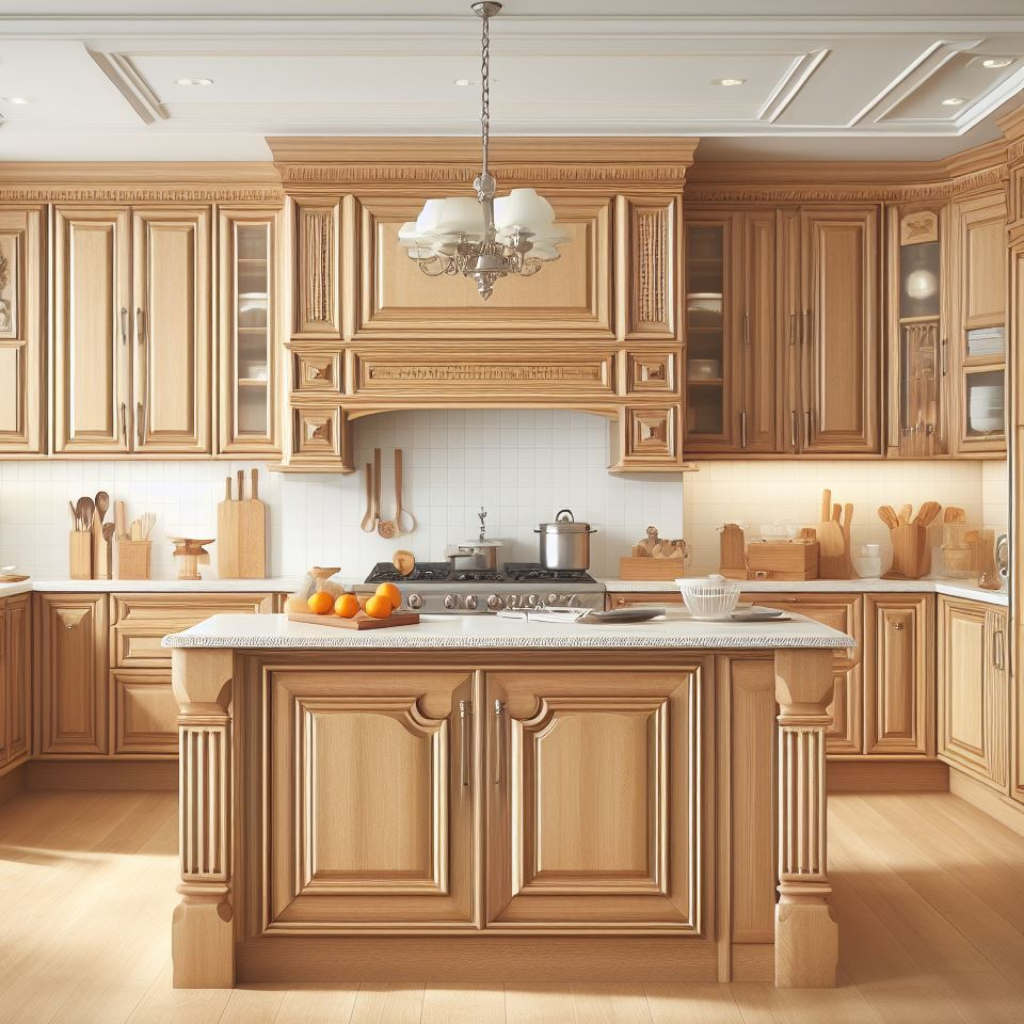Understanding Steam Stains

Steam stains on wood cabinets are a common problem, especially in kitchens and bathrooms where moisture and heat are prevalent. These stains can be unsightly and detract from the overall appearance of your cabinets. Understanding the causes and prevention methods is crucial to maintaining the beauty and longevity of your wooden cabinets.
The Process of Steam Stain Formation
Steam stains occur when excessive moisture penetrates the wood’s surface, causing the wood fibers to swell and distort. This distortion can lead to a change in color, texture, and even the overall shape of the wood. The process begins when hot, humid air, such as steam from cooking or showering, comes into contact with the wood surface. This moisture is absorbed into the wood, causing the fibers to expand. As the moisture evaporates, the fibers contract, leaving behind a dark, discolored area known as a steam stain.
Types of Wood Susceptible to Steam Stains
Not all types of wood are equally susceptible to steam stains. Certain woods, due to their porous nature and grain structure, are more prone to absorbing moisture and exhibiting steam stains.
- Softwoods: Softwoods like pine, fir, and cedar have a relatively open grain structure, making them more susceptible to absorbing moisture and developing steam stains. Their porous nature allows water molecules to penetrate deeper into the wood, leading to more pronounced staining.
- Certain Hardwoods: While hardwoods generally have a denser structure, some, like oak and maple, can still be susceptible to steam stains, especially if they have been finished with a less durable sealant. The porous nature of these woods can allow moisture to penetrate, especially in areas with high humidity or prolonged exposure to steam.
Common Causes of Steam Stains in Kitchens and Bathrooms
Steam stains in kitchens and bathrooms can be caused by a variety of factors, including:
- Cooking: The steam generated from cooking, especially when using pots and pans with lids, can create a humid environment that contributes to steam stains on nearby cabinets. The heat from the stove can also contribute to the problem.
- Showering: Bathrooms, with their inherent humidity, are particularly prone to steam stains. The steam from showers can condense on the cabinets, leading to moisture absorption and staining.
- Leaky Pipes: Leaky pipes or faucets can cause prolonged exposure to moisture, leading to the development of steam stains on cabinets. The constant presence of water can damage the wood and create discoloration.
- Poor Ventilation: Inadequate ventilation in kitchens and bathrooms can trap moisture, creating an environment conducive to steam stain formation. Ensure proper ventilation systems are in place to remove excess humidity.
Removing Steam Stains: Steam Stains On Wood Cabinets

Steam stains, those unsightly marks left behind by excessive moisture, can be a real eyesore on your cherished wood cabinets. Fortunately, with the right approach, you can banish these blemishes and restore your cabinets to their former glory.
Methods for Removing Steam Stains
Several methods can be employed to tackle steam stains, each with its own set of pros and cons.
- Sanding: This method involves using sandpaper to gently abrade the stained area, removing the discolored wood fibers. Sanding is effective for light stains, but it can be time-consuming and may require multiple passes to achieve the desired results.
- Wood Filler: For deeper stains, wood filler can be used to fill in the affected area, creating a smooth surface. This method is effective for larger stains but may require some skill to ensure a seamless finish.
- Cleaning Solutions: A variety of cleaning solutions can be used to tackle steam stains, including vinegar, baking soda, and commercial wood cleaners. These solutions can help to remove surface stains and discoloration, but they may not be effective for deeper stains.
Removing Steam Stains with a Cleaning Solution
One popular method for removing steam stains involves using a cleaning solution. Here’s a step-by-step guide:
- Prepare the area: Clean the stained area with a damp cloth to remove any loose dirt or debris.
- Mix the solution: Combine equal parts white vinegar and water in a spray bottle.
- Apply the solution: Spray the solution onto the stained area, ensuring it is thoroughly soaked.
- Let it sit: Allow the solution to sit for 10-15 minutes.
- Scrub gently: Use a soft-bristled brush to gently scrub the stained area, working with the grain of the wood.
- Rinse and dry: Rinse the area with clean water and dry it thoroughly with a soft cloth.
- Repeat if necessary: If the stain persists, repeat the process as needed.
Comparing Cleaning Methods
While sanding and wood filler are effective for deeper stains, they are more invasive and can alter the appearance of the wood. Cleaning solutions offer a less aggressive approach, but they may not be as effective for deep stains. The choice of method will depend on the severity of the stain and your desired level of restoration.
Preventing Steam Stains

Steam stains on wood cabinets are a common problem, especially in kitchens and bathrooms. These stains can be unsightly and difficult to remove, so it’s essential to take preventive measures to avoid them in the first place.
Protecting Cabinets From Steam
The key to preventing steam stains is to minimize the amount of steam that comes into contact with your cabinets. This can be achieved by taking several steps, such as using exhaust fans, keeping cabinet doors closed, and avoiding direct steam exposure.
- Use exhaust fans: Installing and using exhaust fans in kitchens and bathrooms is crucial. These fans effectively remove moisture and steam from the air, reducing the risk of stains. Ensure your fans are properly sized for your room and run them while cooking, showering, or bathing.
- Keep cabinet doors closed: When cooking or showering, keep cabinet doors closed to prevent steam from directly entering the cabinets. This helps to minimize moisture buildup inside the cabinets, reducing the chances of staining.
- Avoid direct steam exposure: Avoid placing hot pots, pans, or dishes directly on the cabinets. This can cause condensation and steam buildup, leading to stains. Use trivets or heat-resistant mats to protect the surfaces.
Maintaining Wood Cabinets in Steam-Prone Areas, Steam stains on wood cabinets
Regular maintenance is essential to keep your wood cabinets in top condition, especially in areas prone to steam exposure. This includes cleaning, sealing, and protecting the wood from moisture.
- Clean regularly: Wipe down your cabinets regularly with a damp cloth to remove any dust, spills, or moisture. Use a mild cleaning solution designed for wood surfaces and avoid harsh chemicals.
- Seal the wood: Apply a sealant to your cabinets to protect them from moisture and stains. This creates a barrier that prevents water from penetrating the wood. Choose a sealant specifically designed for wood cabinets.
- Protect from moisture: Place moisture-absorbing materials, such as silica gel packets, inside your cabinets to absorb any excess moisture. This helps to keep the air dry and prevent condensation.
Preventing Steam Stains in Different Areas
The following table provides a breakdown of common areas prone to steam stains, the causes of steam, and specific preventive measures to take.
| Area | Cause of Steam | Preventive Measure | Example |
|---|---|---|---|
| Kitchen | Cooking, boiling water | Use exhaust fans, keep cabinet doors closed, avoid placing hot pots directly on cabinets | Running the exhaust fan while cooking and using a trivet to place hot pots on the countertop. |
| Bathroom | Showering, bathing | Use exhaust fans, keep cabinet doors closed, place a moisture-absorbing material inside the cabinets | Ensuring the bathroom exhaust fan is running during and after showers and using silica gel packets inside the cabinets. |
Steam stains on wood cabinets are a common problem, especially in kitchens where humidity and heat often combine. The best way to tackle these stains is to first understand the cause, and sometimes, that means stepping back and considering the bigger picture.
For example, a cluttered bedroom can create a sense of overwhelm, making even the smallest tasks feel like a mountain. Learning to organize your space, as described in this guide on the best way to organize a small bedroom , can actually improve your overall approach to problem-solving, including those stubborn steam stains on your wood cabinets.
Steam stains on wood cabinets can be a real pain, especially if they’re in a high-traffic area like the kitchen. But sometimes, even the most meticulous cleaning can’t fully erase them. Perhaps you’re thinking of installing a ceiling fan to help with ventilation, and if you have a small bedroom, you might want to consider the size of the fan for optimal airflow.
Check out this helpful guide on what size ceiling fan for small bedroom to make sure you choose the right one. After all, a well-ventilated room can help prevent moisture buildup, which can contribute to steam stains on wood cabinets.
